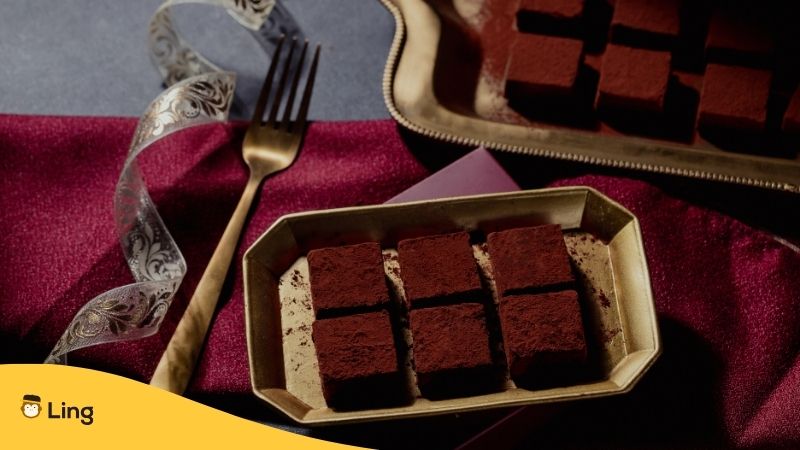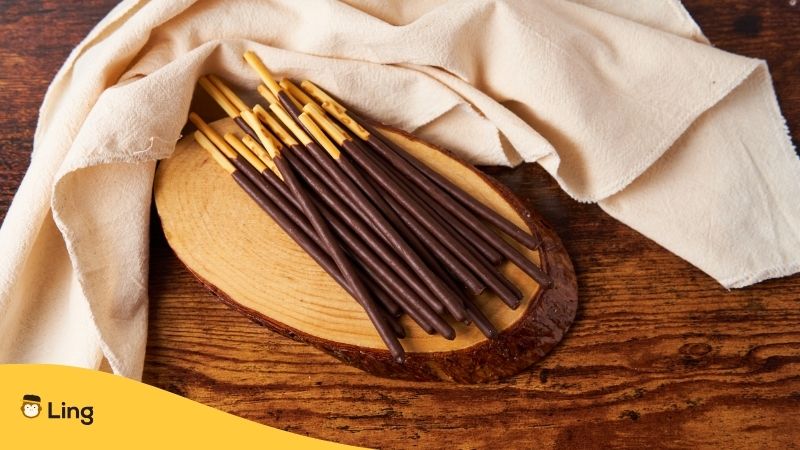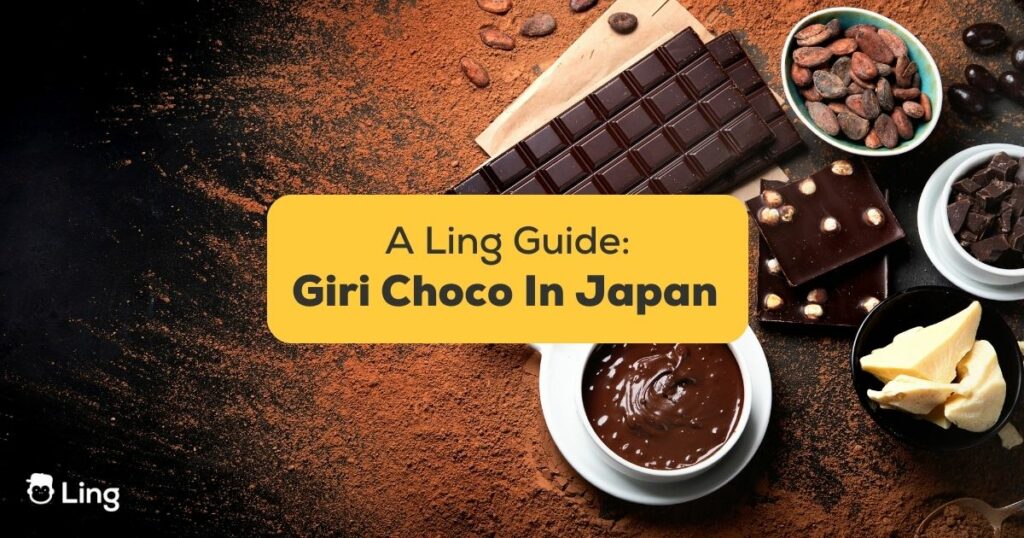Every Valentine’s Day, I wake up early to prepare the handmade chocolates I give out as 義理チョコ or giri choco – “obligation chocolates”, to all the men in my professional life. Sorry, it’s not as romantic as you think! As an exchange language teacher at Honjo High, I spend weeks planning my homemade confections for my boss, male co-workers, and key clients.
My friends back home always tease me about how many boxes of giri-choco chocolates I hand out each year! But after spending some time in Japan, I quickly realized that giving these beautifully wrapped gifts is an important Japanese custom that lets us ladies express courtesy and appreciation in the workplace.
Now, preparing ornate boxes of bonbons, ganache truffles, and chocolate-dipped fruit is one of my favorite duties! I usually buy in the shops at Nakamise Street, and I take pride in selecting the cacao percentages and fillings suited to each man’s taste. They literally have all the best percentages I could ever dream of!
As a chocolate connoisseur, I’ll let you in on all the secrets of giri choco! Whether you’re a foreigner spending your first Valentine’s Day in Japan, or a long-time expat adjusting to our traditions, I’ll dish on the history, etiquette rules, and best practices to smoothly get through this holiday focused on obligation chocolate.
Table of Contents

What Is Giri Choco?
The key thing that makes giri choco stand out from other Japanese chocolate is who it’s for and what it represents. Specifically, giri choco is given by women to their male coworkers, colleagues, bosses, mentors, and other men in their business or professional lives.
Now, the “giri” part deserves some explanation for any non-Japanese speakers out there! This word refers to the social obligation or duty we feel to give these chocolates to maintain harmony in our important relationships. It comes from the same cultural concepts of reciprocity and formality that shape so much of etiquette here. Just as we exchange omiyage souvenirs to strengthen bonds, giri choco signifies our indebtedness in an office context.
Is It The Same With Honmei Choco?
So now that you know all about giri choco and who we humble OL give it to, you may be wondering – what about chocolate for our special sweethearts? Well, that’s where 本命チョコ or honmei choco comes in!
Perfect as a combo when you say I love you in Japanese, Honmei choco translates to “true feeling chocolate” – and as you can guess, it’s what Japanese girls and women make for our crushes, boyfriends, fiancés, and husbands. This honmei chocolate is crafted with true love behind it!
When I first started dating my boyfriend Jonathan-kun, I was so nervous about presenting him home choco that Valentine’s Day. I baked a rich chocolate cake filled with molten caramel, decorating it painstakingly with chocolate ganache roses. And I’ll never forget his smile when he took that first dreamy bite! Unlike giri choco, home chocolate represents our real romantic feelings.
Honmei chocolate is usually more lavish than giri choco as well – think French silk truffles, chocolate-dipped strawberries and decadent cake. No expenses were spared for our number-one guys! And honmei choco often leads to equally scrumptious White Day return gifts one month later.

Is It The Same With Tomo Choco?
友チョコ or tomo choco translates to “friend chocolate” – and as you likely guessed, it’s the chocolate women and girls exchange with our close friends. You see, Valentine’s Day here used to focus solely on us ladies gifting various kinds of chocolate to men. But over the years, exchanging treats with other women in our lives has become a fun new custom!
I first gave tomo choco when my friend and coworker Sana-chan was going through a bad breakup one February. I wanted to lift her spirits, so I prepared a self-care package filled with dark chocolate truffles, milk chocolate facial masks, and white chocolate-scented bath bombs. Sana-chan loved pampering herself with it and said I was the best tomo ever!
Now, many high school and college girls split their time on Valentine’s Eve preparing chocolates for potential crushes and adorable tomo chocolates for their BFFs. Even busy career women like me take a break from making obligation giri choco to put together small boxes of bonbons or chocolate cookies for close coworkers. Giggling together over hot cocoa while exchanging these sweet treats has become a delightful Galentine’s tradition!
Is It The Same With Jibun Choco?
自己チョコ or Jibun literally translates to “oneself” in Japanese. So, you clever chocolate scholars likely guessed – jibun choco is chocolate women buy for themselves to enjoy on Valentine’s Day! This solo chocolate is a form of self-gifting and self-care.
The rise of jibun choco shows that Japanese women are focusing more on pleasing themselves. Rather than spend all of February 14th preparing elaborate giri choco boxes for dozens of male coworkers, many ladies now set aside money and time for special treats just for us. It’s put our own happiness first!

Is It The Same With Kazoku Choco?
Kazoku translates to “family” in Japanese. So as you clever chocoholics likely guessed, kazoku choco is chocolate gifted to close family members like parents, siblings, grandparents, and children. This bonding chocolate shows care and appreciation for our relatives.
When I was little, my mom always let me help make the kazoku choco we gifted to my ojiisan and obaasan (grandpa and grandma). We’d bake fudgy brownies or chewy chocolate cookies, with me getting more batter on my face than in the oven! Even now, as a busy OL, I always save time on Valentine’s Day to make chocolate truffles decorated with edible flowers for my parents and grandparents.
Ready To Celebrate Valentine’s Day In Japan?
Now you’re a true giri choco connoisseur, ready to impress all your Japanese friends with chocolate facts this Valentine’s Day! Whether you’re celebrating February 14th in Tokyo, Osaka, Kyoto, or beyond, knowing the rich culture around gifting obligation chocolate, friendship chocolate, family chocolate, and self-chocolate will help you make savvy choices.
Ready to immerse yourself further in Japan’s tempting chocolate culture this Valentine’s Day? If you want to learn even more sweet phrases around romance, food and everyday life – be sure to download my favorite language app, Ling!
Available on iOS and Android, Ling lets you build vocabulary around relevant topics like relationships, dining, shopping, and more. The Ling app provides fun, bite-sized Japanese lessons that you can access anywhere through Ling to pick up key phrases over time. And with the gamified review system, you’ll remember everything from essential food vocabulary for ordering choco ingredients to smooth romantic lines for confessing on Valentine’s Day!



































































